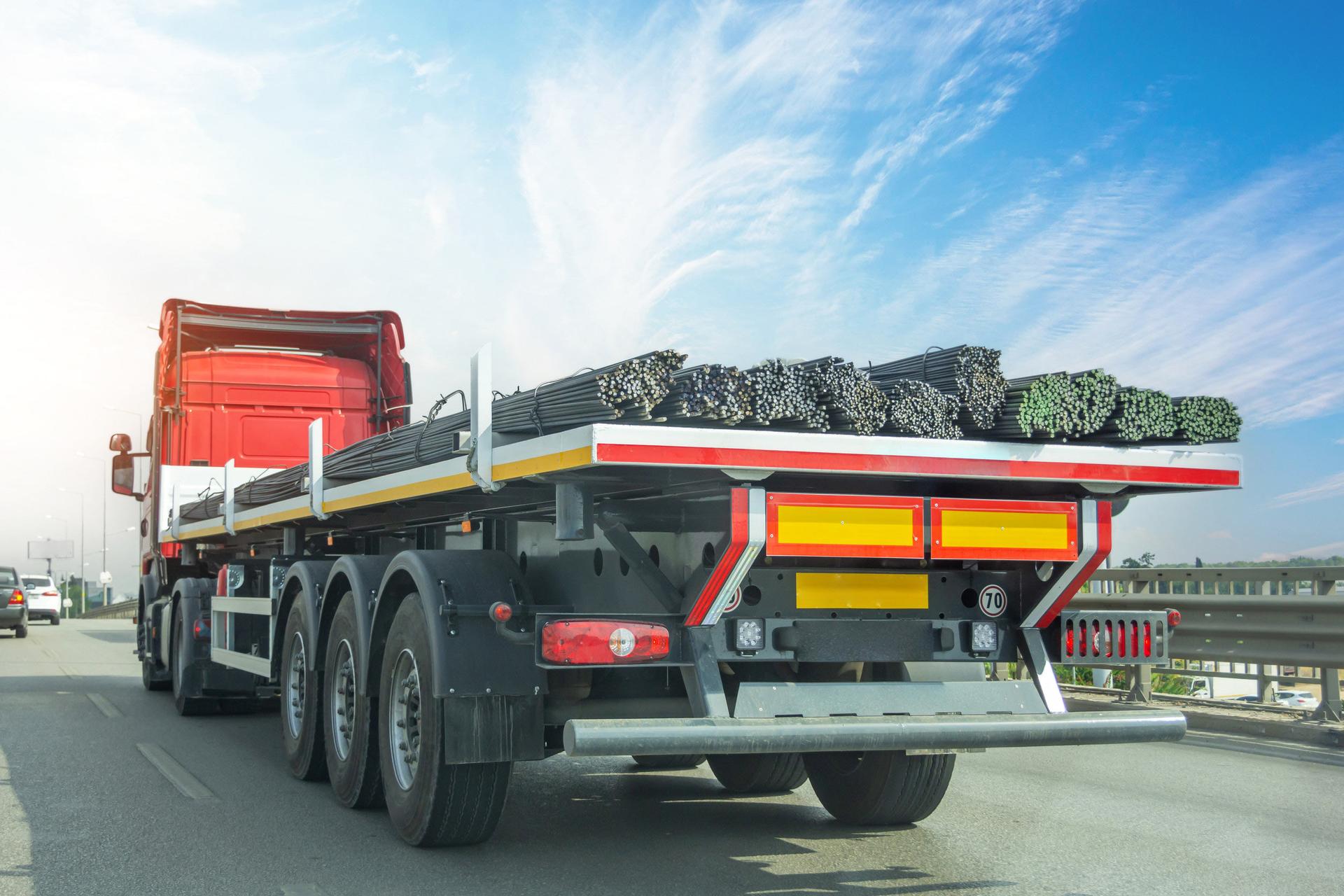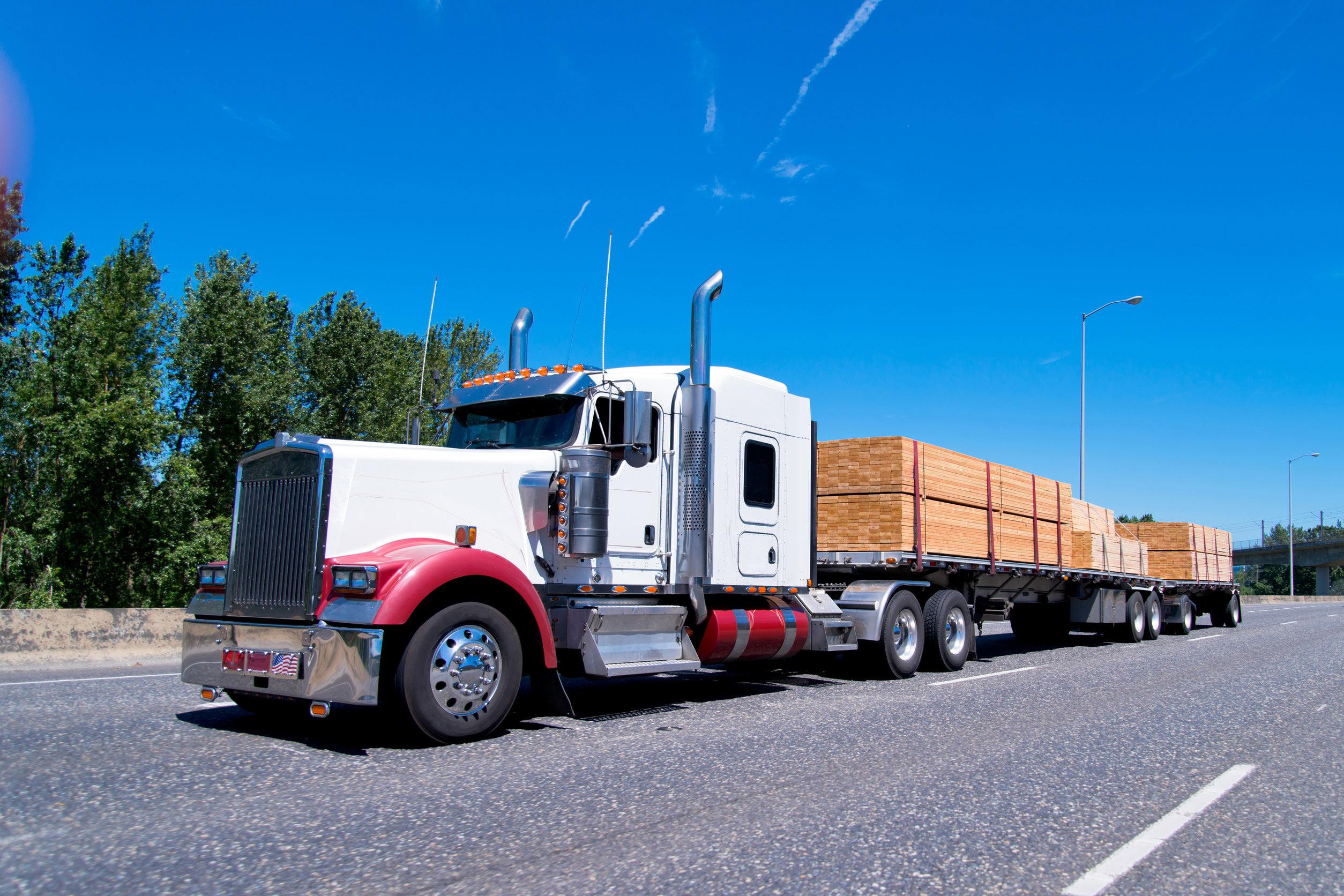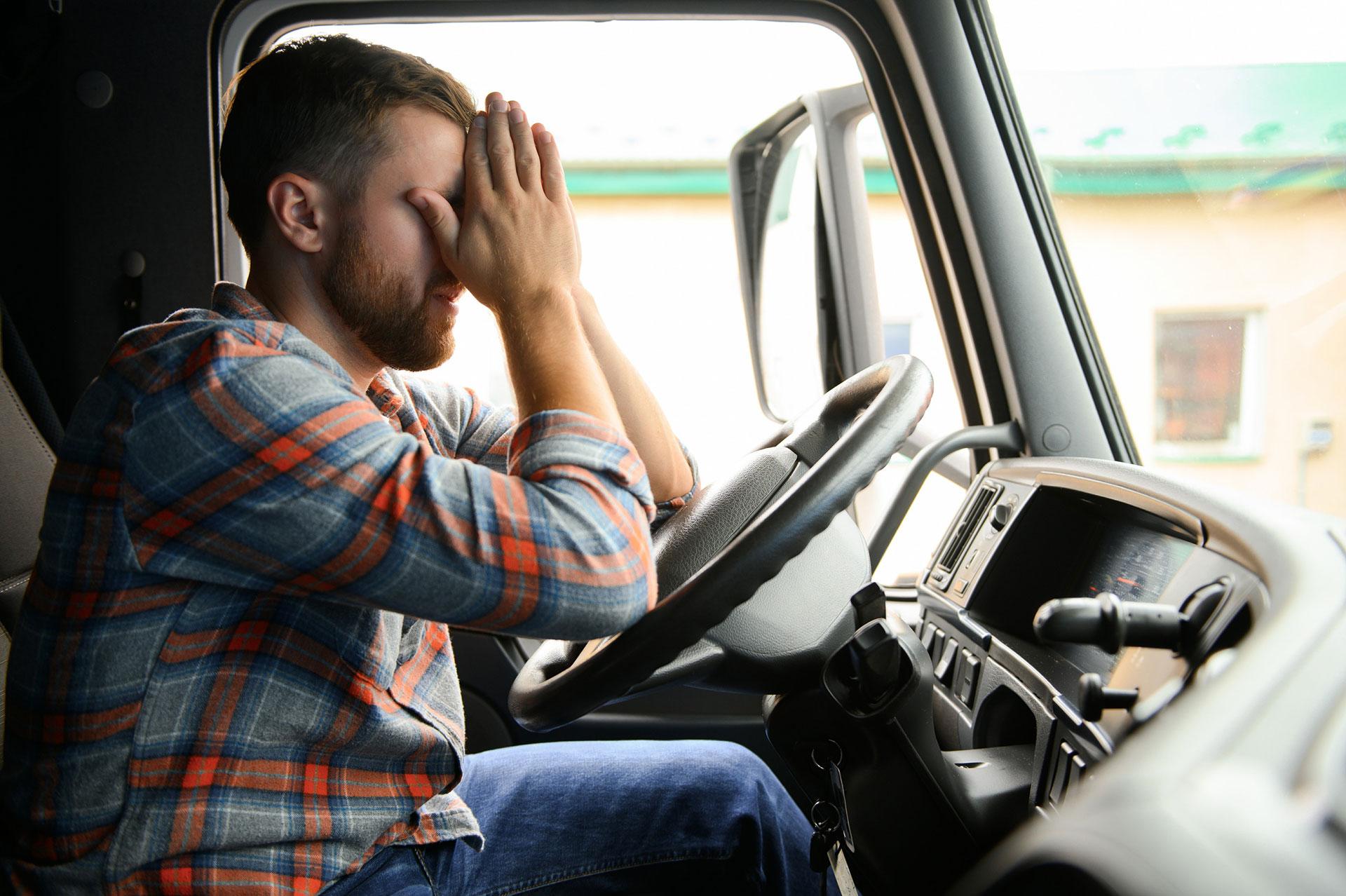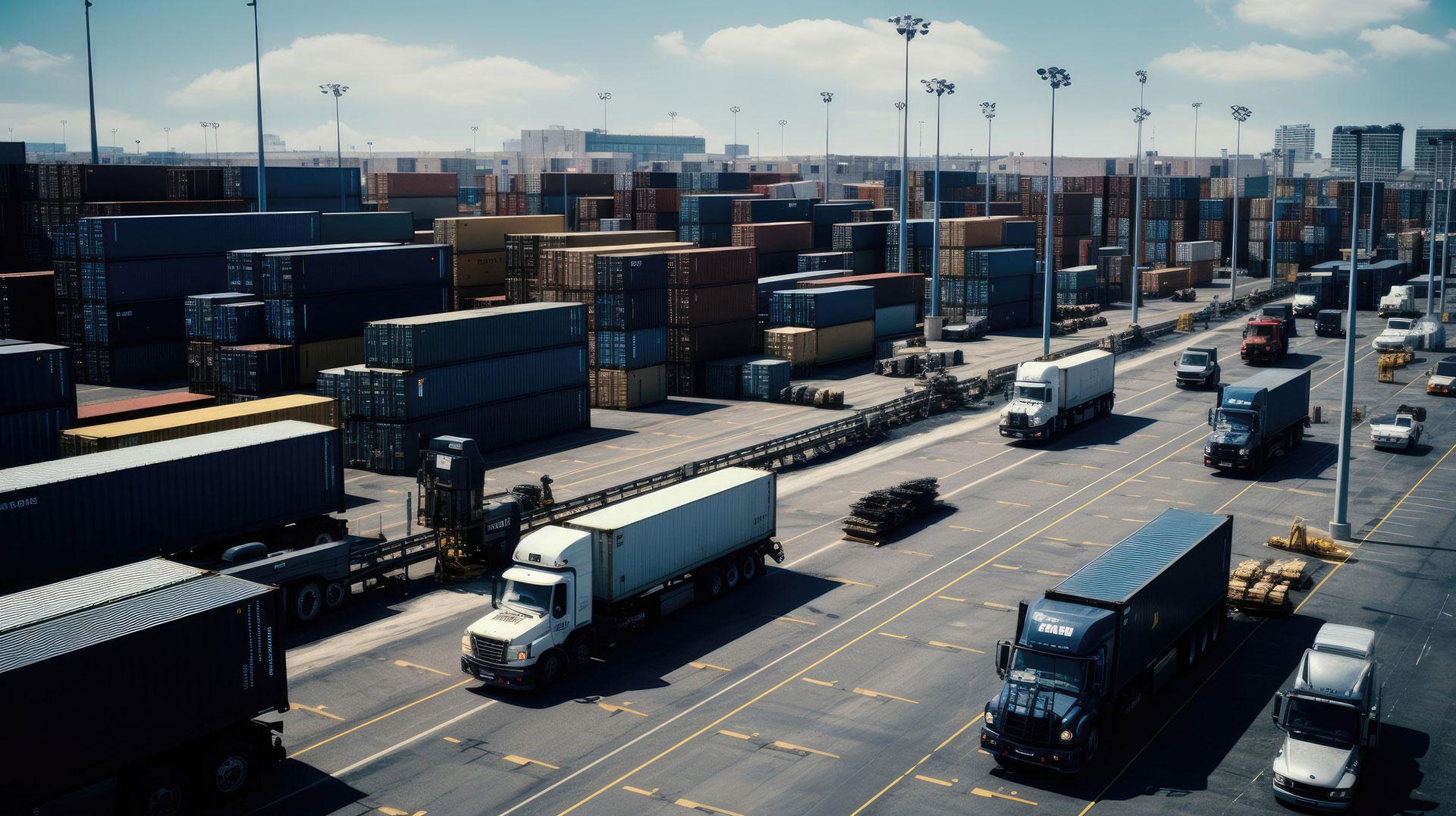Essential Flatbed Safety Tips for Truckers
June 18th, 2025
By Arrow Truck Sales

Flatbed work demands more than horsepower and a CDL. Whether you’re hauling steel coils across state lines or strapping down lumber for a local delivery, safety isn’t optional—it’s built load by load, strap by strap, mile by mile.
This guide breaks down the flatbed-specific risks and practices every owner-operator and fleet driver should know. Because let’s face it: the road doesn’t forgive shortcuts.
Load Securement: No Guesswork Allowed
Flatbed loads are exposed to wind, rain, traffic, and inertia. A tarp won’t keep a 2,000-pound crate from shifting. That’s why load securement is the foundation of flatbed safety—and it needs to be done right every time.
Use the following to match cargo needs:
Ratchet straps
– Flexible, easy to adjust, great for lighter loads or irregular shapes.
Winch straps
– Ideal for evenly distributed freight like pallets or steel sheets.
Chains and binders
– Required for heavy equipment, machinery, or dense freight that needs extra holding power.
Supplement with edge protectors to prevent straps from cutting into cargo, and use dunnage (blocks or supports) to stabilize loads and reduce movement.
FMCSA rules require at least one tie-down for every 10 feet of cargo and two tie-downs minimum for anything over 5 feet. But regulations are a starting point, not a ceiling. If in doubt, add another strap.

Oversized and Irregular Loads: Know the Drill
Hauling oversized loads isn’t just about scale—it’s about planning, permitting, and visibility. Drivers must navigate multiple state regulations, which vary not just in dimensions allowed but also in required safety measures.
Key safety must-haves include:
Wide load banners and flags
Escort vehicles when required
Permits tailored to the states you’re traveling through
For example, Texas might allow wider loads on certain corridors than Arizona, and weekend travel rules can differ dramatically. Get clear on local laws before you hit the road—otherwise you risk serious delays or fines.
Flatbed + Weather = Unforgiving Conditions
Rain, snow, and wind hit flatbeds differently than enclosed trailers. Cargo’s exposed, footing’s slicker, and tarps can become weapons in a storm.
Key precautions:
Tarp in sheltered areas
when possible—wind gusts can flip a tarp fast and injure you in the process.
Watch for freezing straps or chains
in the winter. Ice reduces tension and can lead to failed securement.
Wear slip-resistant gear
and plan your steps while inspecting during storms. Falls from trailer decks are a leading cause of flatbed injuries.
Moisture-sensitive loads, like lumber or electronics, demand extra care in tarping and sealing. Even small leaks can ruin thousands of dollars worth of freight.
The Permit Maze: State-by-State Challenges
There’s no universal permit for hauling wide or overlength loads. Every state has its own limits, fees, escort requirements, and allowable travel hours.
Take Texas: they allow a 14-foot-wide load with two escorts and advance notice. But in Arizona, you’ll need route surveys and may be restricted from certain highways altogether. Some states ban night moves entirely, while others allow them with lighting.
Investing in route planning tools and working with brokers who understand these differences can save you hours—or days—on the road.
Digital Tools That Make a Difference
Today’s flatbed drivers have access to smarter tools than ever before. If you’re not using them, you’re adding unnecessary risk to every haul.
Useful upgrades include:
Low-clearance GPS systems
for avoiding underpasses or narrow roads.
Trip planning apps
that account for permits, weigh stations, and rest stops.
Digital inspection logs
to track securement checks and maintenance.
Dash cams and lane departure alerts
, especially in newer trucks, help mitigate human error.
When buying a truck, look for models that are already equipped with these safety features. Many late-model used trucks—especially those sold by experienced dealers—come with this tech installed.
Nighttime Hauling: Don’t Rely on Luck
Flatbed work at night takes another level of attention. Poor lighting and low visibility can turn a secure load into a serious hazard if you’re not prepared.
Here’s what to prioritize:
Reflective tape and warning lights
on extended or odd-sized cargo.
A powerful flashlight
for checking straps and chains at night.
Plan stops strategically
—not all rest areas are flatbed-friendly.
Parking at an angle or on an incline increases the risk of load shift. Always double-check securement after driving in the dark or stopping for fuel.
Flatbed Safety Culture: Company vs. Owner-Operator
Larger carriers often provide safety training, route planning support, and equipment inspection programs. But if you’re an owner-operator, it’s on you to create your own safety system.
Suggestions for staying sharp:
Build a pre-trip checklist
that includes tie-down counts, strap tension, tarp condition, and route review.
Log inspections digitally
so you don’t skip steps under pressure.
Use third-party coaching
or online refresher courses to stay current.
Some drivers keep laminated cards in their cab listing securement rules by freight type. Others use mobile apps to track weather and road hazards in real-time. Safety habits for loading and unloading build consistency—and consistency saves lives.
Real-World Consequences of Cutting Corners
Drivers who skip safety steps often learn the hard way. A loosely secured pipe bundle in Tennessee slid into traffic, causing a multi-car pileup. Another driver lost control when a tarp came loose and blanketed the windshield.
These aren’t rare outliers—they’re examples of other common industry hazards that are the result of rushing or relying on memory instead of double-checking tie-downs and securement. Even minor oversights, such as failing to check load shift after the first 50 miles, can lead to disaster.
Safety Isn’t a Feature—It’s a Mindset
No shortcut saves more time than a safe delivery. In flatbed trucking, the best drivers aren’t the fastest—they’re the ones who know how to load smart, drive aware, and stay one step ahead of risk.
And the right equipment helps. At Arrow Truck Sales, we work with owner-operators and fleets to match them with reliable used flatbeds built for the job. Many of our trucks come equipped with the safety tech, securement options, and performance features that make flatbed work safer and more profitable.
Whether you’re hauling steel or shipping oversized machinery, you’ve got a job to do—and doing it safely is what keeps you in business for the long haul.

